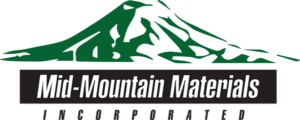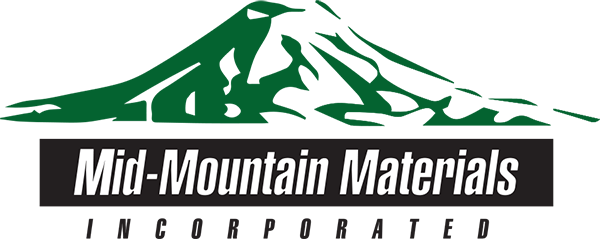Refractory cement and moldables are highly important across a number of industries. In the construction of furnaces and large ovens, where there are high-temperature firebricks or refractory linings, castable refractory cement is essential. These are generally formulated from thermally resistant clinker and specialized aggregate materials and are essential to thermodynamic stability in the heating chamber or in components that experience significant thermal stress. Solids expand and contract under temperature change, particularly metals, which are good thermal conductors. Cements used to adhere structural metals together in refractory applications must retain their structural integrity in the presence of heat stress. Refractory cement uses binding materials with enhanced thermodynamic properties to reduce the risk of mechanical failure during thermal expansion and contraction. Fused minerals such as aluminum oxide, or alumina, are used to bind coarse aggregate materials and provide superior temperature resistant properties without compromising structure.
Aluminum Industry
In the Aluminum Industry, refractory material is used as the lining of furnaces, ladles or any crucibles, where molten metal is deposited until it undergoes further processing. Refractories have to sustain very high temperature and protect the container from the corrosive nature of the molten metal and the slag/flux. They also help to keep the required temperature inside the ladle due to their thermal properties. Aluminosilicate-based low cement castables are now widely used in the aluminum industry for refractory linings in melting and holding furnaces and their usage has become more commonplace due to advancements in installation techniques. For aluminum manufacture, refractory cement must play the triple role of providing mechanical strength, protection against corrosion and thermal insulation. Applications in the aluminum industry can include coatings for furnace linings, troughs, burners and molds, molten aluminum splash shield protection, trough and ladle coatings and linings for molten aluminum transfer, high-temperature patching and sealing of refractory linings, lightweight refractory linings and induction furnace coil coating.
Protection Against Corrosion
The durability of materials, including both metals and ceramics, exposed to molten aluminum is an important consideration. This is because molten aluminum is an aggressive metal to a number of materials. Examples of processes where this is important are die-casting, molten metal containment and semi-solid processing. Molten aluminum can cause considerable corrosion of the handling and container materials leading to an unpredictable lifetime. In the aluminum industry, refractory performance against corrosion is an important factor affecting the quality of metal produced and the durability of furnace lining. Corrosion of refractory materials during the casting process for aluminum alloys increases the overall cost of production. The selection of the appropriate refractory composition for Al-casting applications requires comprehensive characterization of the physical, mechanical and chemical properties of the materials.
Improving Refractory Materials
Bonding in low cement castables is achieved by using three components: calcium aluminate cement, microsilica and reactive alumina. These have a strong influence on the mechanical and physical properties of the castables as well as their corrosion behavior with molten aluminum. Cement is an important constituent and its content ranges from 5 to 8%. Calcium aluminate phases are commonly a mixture of calcium monoaluminate and calcium dialuminate. Increasing the cement content also increases the quantity of calcium aluminosilicates formed, which tends to reduce the amount of free silica, and improves the corrosion resistance of castables in contact with molten aluminum. The lime/silica ratio critically impacts the liquid phase formation at high temperatures and thereby affects both the corrosion behavior, and mechanical properties such as hot strength and creep resistance. However, cement phases have been seen to be susceptible to molten metal attack and are believed to be the starting point for corrosion. The higher water requirement of these castables also reduces the density and subsequently increases the porosity of the refractory matrix.
Reducing Cement Content and Adding Microsilica
An increased porosity of castables due to cement use has seen low (LCC), ultra-low (ULCC) and zero cement castables (ZCC) being developed. Low cement castables contain greater quantities of fine/ultra-fine particles and this means improved densification and better mechanical properties, although they exhibit greater porosity. Microsilica is widely used as filler in refractory materials, particularly in castables. This is because the particles have an average size of 0.15 microns and are an amorphous form of silica. Microsilica can reduce the cement content of refractory castables due to the small particle size. It can also reduce the open porosity from about 20-30% to 8-16% and the drop in mechanical strength. Microsilica is thus added to alumina-based refractories to improve the mechanical properties at lower cost. However, microsilica is believed to improve the flow behavior of castables through the formation of low melting liquid calcium aluminosilicate phases. This means the properties of castables containing microsilica are greatly influenced by the CaO content in the composition.
Microsilica can also react with cement and water to form zeolite CaO-Al2O3-SiO2-H2O hydrated phases, which have an effect on castable surface porosity. Any free silica in the castable will be reduced by molten aluminum to form corundum and this is where the corrosion process starts. For aluminum melting application, the presence of silica is not beneficial due to its low chemical resistance to aluminum attack. Refractory cements also contains non-wetting agents to enhance the corrosion resistance of aluminosilicates. The most common additives are BaSO4, CaF2, and AlF3.
The addition of alloying metals such as Mg and Zn to molten aluminum reduces the surface tension and viscosity of the molten metal. This can result in an increase in penetration of molten aluminum into refractory material pores. Magnesium is a major cause of corundum development, which is the main cause of aluminosilicate refractory corrosion by molten aluminum.
THERMOSEAL® Refractory Cement
Mid-Mountain Materials use three distinct refractory cements for thermal insulation and refractory adhesion applications. These are optimized to withstand thermal expansion and contraction and to provide resistance to erosive media and secure adhesion of gaskets and seals in industrial furnaces. The THERMOSEAL® range has temperature resistant properties of up to 1095°C (2000°F) (THERMOSEAL® 2000) and varied consistencies depending upon the application requirement. THERMOSEAL® 1000/1000SF is a high-temperature cement, with a continuous use limit of 538°C (1000°F), and a fibrous consistency. This has been carefully formulated to withstand thermal expansion and contraction under fluctuating heat conditions. There is also a range of moldable materials and coatings incorporating the latest refractory technology to resist expansion and corrosion in aluminum processing.
References
- Firoozjaei, E. A., Saidi, A., Monshi, A., & Koshy, P. (2010). The effect of microsilica and refractory cement content on the properties of andalusite based Low Cement Castables used in aluminum casthouse. Cerâmica, 56(340), 411-421
- Yan and Z. Fan, Review: Durability of materials in molten aluminum alloys, Journal of Materials Science 36 (2001) 285 – 295



